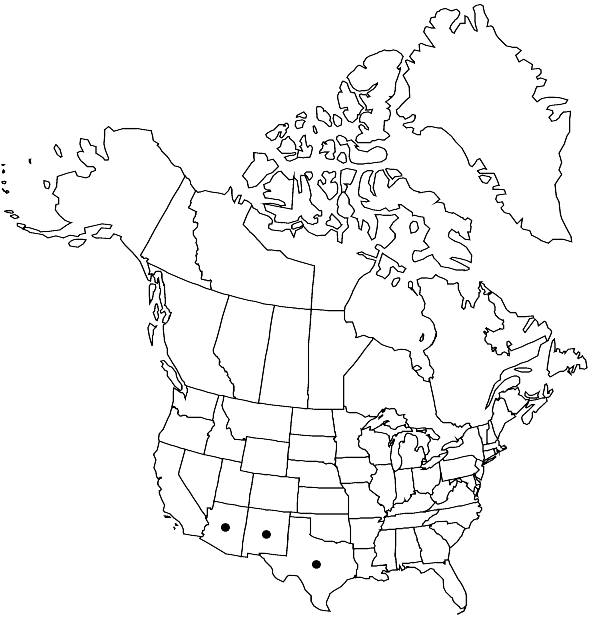Difference between revisions of "Syntrichia obtusissima"
Bull. Buffalo Soc. Nat. Sci. 32: 269. 1993,.
FNA>Volume Importer |
imported>Volume Importer |
||
| (3 intermediate revisions by 2 users not shown) | |||
| Line 9: | Line 9: | ||
|name=Barbula obtusissima | |name=Barbula obtusissima | ||
|authority=Müller Hal. | |authority=Müller Hal. | ||
| + | |rank=species | ||
|publication_title=Syn. Musc. Frond. | |publication_title=Syn. Musc. Frond. | ||
|publication_place=1: 640. 1849 | |publication_place=1: 640. 1849 | ||
| Line 15: | Line 16: | ||
|name=Tortula obtusissima | |name=Tortula obtusissima | ||
|authority=(Müller Hal.) Mitten | |authority=(Müller Hal.) Mitten | ||
| + | |rank=species | ||
}} | }} | ||
|hierarchy=Pottiaceae;Pottiaceae subfam. Pottioideae;Syntrichia;Syntrichia obtusissima | |hierarchy=Pottiaceae;Pottiaceae subfam. Pottioideae;Syntrichia;Syntrichia obtusissima | ||
| Line 38: | Line 40: | ||
-->{{#Taxon: | -->{{#Taxon: | ||
name=Syntrichia obtusissima | name=Syntrichia obtusissima | ||
| − | |||
|authority=(Müller Hal.) R. H. Zander | |authority=(Müller Hal.) R. H. Zander | ||
|rank=species | |rank=species | ||
| Line 52: | Line 53: | ||
|publication year= | |publication year= | ||
|special status= | |special status= | ||
| − | |source xml=https:// | + | |source xml=https://bitbucket.org/aafc-mbb/fna-data-curation/src/2e0870ddd59836b60bcf96646a41e87ea5a5943a/coarse_grained_fna_xml/V27/V27_913.xml |
|subfamily=Pottiaceae subfam. Pottioideae | |subfamily=Pottiaceae subfam. Pottioideae | ||
|genus=Syntrichia | |genus=Syntrichia | ||
Latest revision as of 21:29, 5 November 2020
Stems (5–)10–20 mm. Leaves clasping at base, infolded, and twisted around the stem when dry, wide-spreading to squarrose when moist, lingulate to spatulate, 3–4 × 1–1.5 mm, keeled; margins revolute in the proximal 3/4–7/8, entire, often laxly undulate; apices emarginate to retuse, occasionally truncate or acute; costa excurrent into a toothed, hyaline awn (often brown at base) usually longer than the leaf, yellow or brown, often minutely papillose abaxially (but not serrate because of projecting cell ends); basal cells abruptly differentiated, rectangular, 70–90(–100) × 22–40 µm, often with yellow walls, narrowly rectangular at the margins; distal cells quadrate to polygonal, 15–23 µm, thin-walled, pellucid, bulging and bearing 4–7 papillae per cell. Specialized asexual reproduction absent. Sexual condition autoicous, although perigonia often lacking, apparently sometimes dioicous. Seta red-brown, 10–15 mm. Capsule yellowish or reddish brown, 3–4.5 mm, straight or slightly curved, with an abrupt neck; operculum 1.5–2 mm, reddish brown; peristome ca. 1.5 mm, the distal divisions twisted ca. 2 turns, yellow or red, the basal membrane white, 1/3 the total length. Spores 9–16 µm, papillose.
Habitat: Soil, rock, rarely the bases of trees
Elevation: moderate to high elevations
Distribution

Ariz., N.Mex., Tex., Mexico, South America (Bolivia, Peru).
Discussion
Syntrichia obtusissima, with a distinctive Southwest and Mexican-Andean disjunction, has been much confused with S. ruralis, leading to many misidentified specimens in herbaria, but the large, pellucid leaf cells (about 15–23 µm) contrast with those of S. ruralis (about 8–12 µm), and the back of the costa lacks serrations from projecting cell ends. Furthermore, it has a clear central strand in the stem, and hydroids in the costa, neither of which is found in S. ruralis.
Selected References
None.